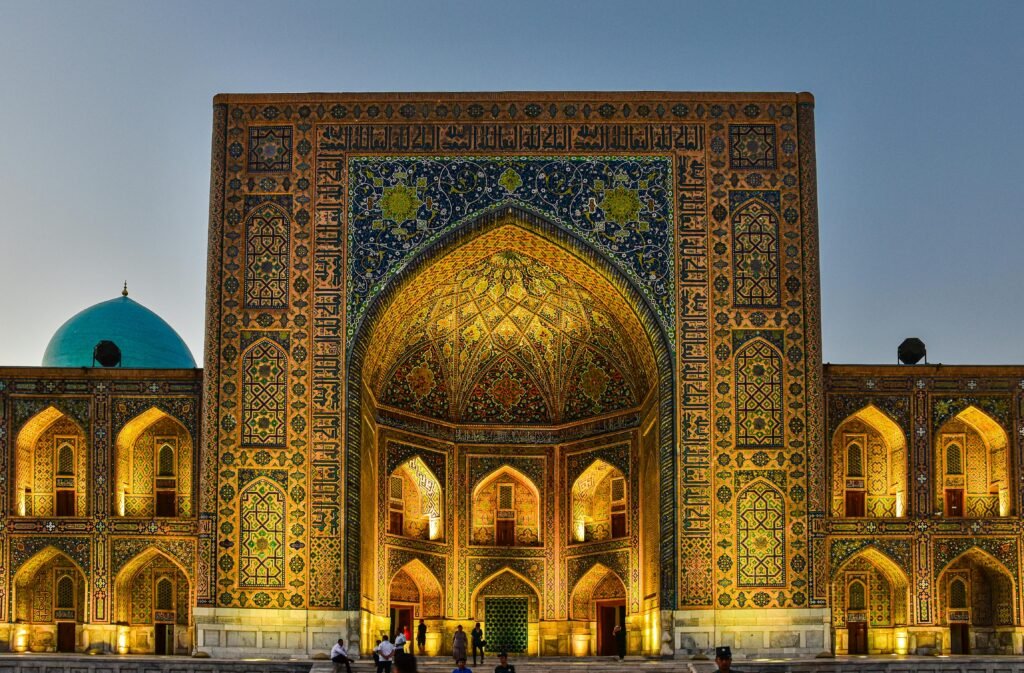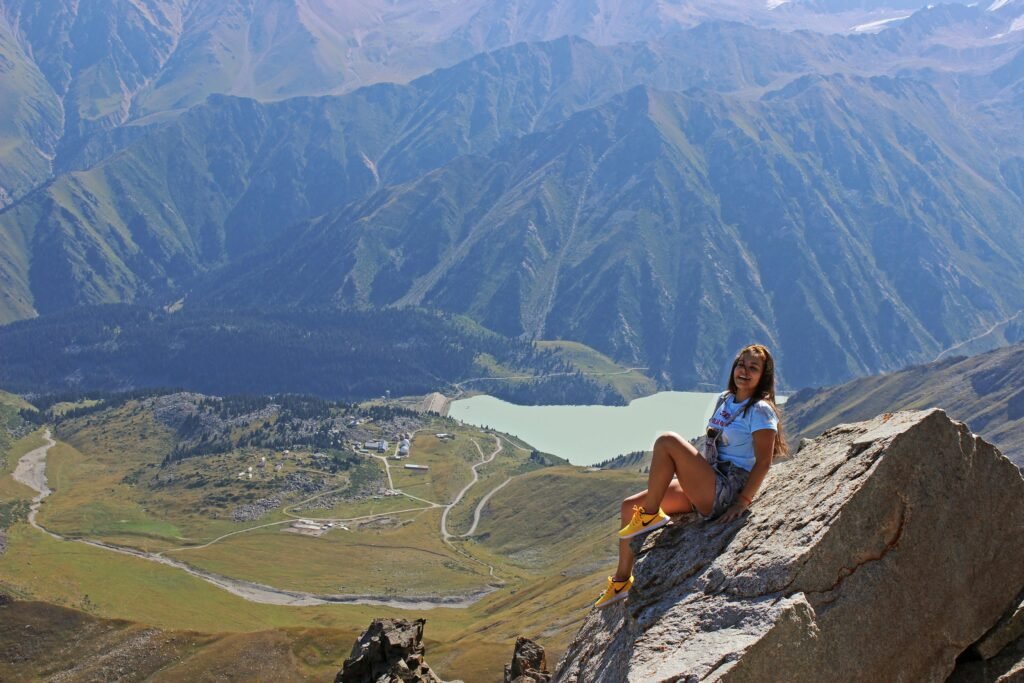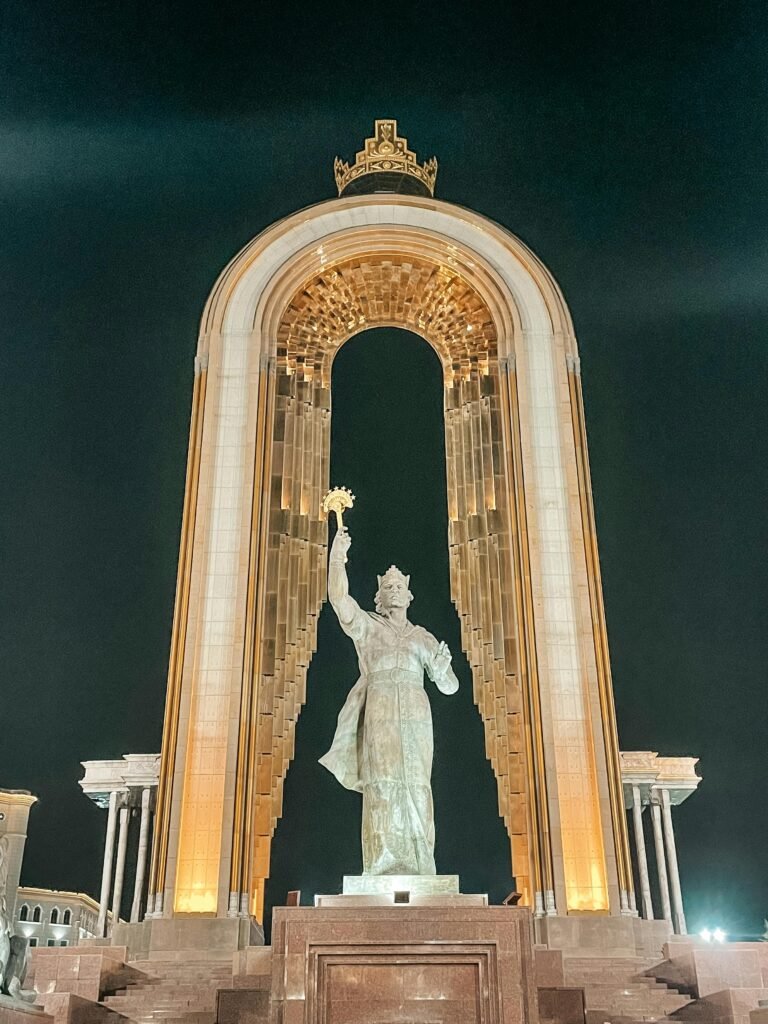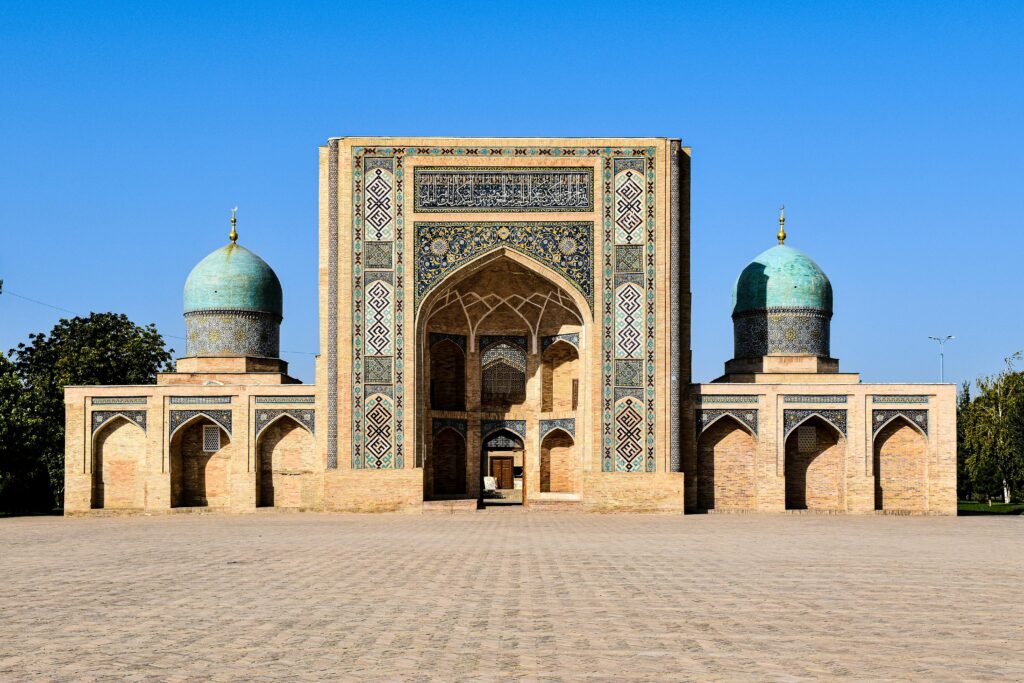Introduction to Central Asia
Central Asia, a region rich in history and diversity, is often overlooked by travelers seeking unique experiences. Geographically, it encompasses several countries, including Kazakhstan, Kyrgyzstan, Tajikistan, Turkmenistan, and Uzbekistan. This area is characterized by vast steppes, towering mountains, and arid deserts, creating a stunning contrast in its natural landscapes. Each of these countries shares a historical tapestry woven with the influences of ancient Silk Road trade, nomadic tribes, and various empires, contributing to its cultural richness.

The historical significance of Central Asia cannot be understated. It served as a critical junction for trade routes, linking East and West. This unique position enabled the exchange of goods, ideas, and cultures, fostering a legacy still evident today. As a result, visitors can find an incredible fusion of traditions, languages, and rituals that reflect the diverse heritage of the region. From the bustling bazaars of Samarkand to the serene valleys of Ala Archa, each destination offers a glimpse into the intricacies of Central Asia’s past and present.
Moreover, Central Asia is home to various ethnic groups, each contributing to the cultural mosaic of the area. The region’s people pride themselves on their hospitality, and travelers often find themselves welcomed into homes and communities with open arms. Traditional music, art, and cuisine are vibrant aspects of Central Asian life that visitors can explore, providing a deeper understanding of the local culture.
With its unique blend of stunning landscapes, rich history, and diverse cultures, Central Asia emerges as a distinctive travel destination. Those who venture into this relatively uncharted territory will discover a world filled with breathtaking scenery and unparalleled experiences, making it a must-visit for any adventurous traveler.
Samarkand: The Jewel of the Silk Road
Samarkand, often referred to as the Jewel of the Silk Road, is a city steeped in history and culture. Strategically located at the crossroads of ancient trade routes, it served as a vital hub for merchants traveling between the East and West. This UNESCO World Heritage Site boasts a rich tapestry of architectural marvels, reflecting a blend of Persian, Islamic, and Central Asian influences that date back thousands of years.

One of the most significant attractions in Samarkand is the Registan, an iconic square that showcases three magnificent medressas: Ulugh Beg, Sher-dor, and Tilya-Kori. This grand ensemble, with its stunning tile work and intricate mosaics, has been a center of education, culture, and religion since the 15th century. Visitors to the Registan can marvel at the artistry while absorbing the energy of this historically important gathering place.
Another remarkable site within Samarkand is Shah-i-Zinda, a necropolis featuring a series of elaborately decorated mausoleums and tombs. Translating to “The Living King,” this sacred site is believed to house the tomb of Qusam ibn Abbas, a cousin of the Prophet Muhammad. The stunning blue and green tiles that adorn the structures captivate tourists and locals alike, creating a serene atmosphere that reflects the city’s spiritual heritage.
Additionally, the Bibi-Khanym Mosque stands as a testament to the city’s glory during the Timurid Empire. Commissioned by Timur (Tamerlane), this grand mosque was once one of the largest and most magnificent in the world. Although it has undergone restoration, its sheer scale and intricate design continue to impress those who visit.
Beyond its historical landmarks, Samarkand is known for its vibrant culture and delectable local cuisine. The city offers an array of culinary delights, including plov, a rice dish often considered the national dish of Uzbekistan, as well as various kebabs and fresh fruits. In conclusion, the historical significance and rich cultural heritage make Samarkand a must-visit destination for anyone exploring the treasures of Central Asia.
Almaty: The Cultural Hub of Kazakhstan
Almaty, the largest city in Kazakhstan, is often heralded as the cultural heart of the nation. This vibrant metropolis beautifully blends modernity with tradition, acting as a melting pot of diverse cultures and influences. Visitors to Almaty will experience an array of attractions that reflect its rich history and dynamic present. Among its most notable sites is the revered Mekhet Ata, a historically significant mosque that serves as a symbol of spiritual heritage for many Kazakhs. Its architectural beauty and serene ambiance make it a must-visit for anyone exploring the city.

In addition to Mekhet Ata, the city is home to the picturesque Panfilov Park. This green oasis is not only a place of relaxation but also a cultural landmark, featuring the impressive Zenkov Cathedral. One of the few wooden structure cathedrals in the world, it stands testament to Almaty’s architectural heritage, offering visitors a remarkable visual experience. The park is a hub of local life, often bustling with families enjoying leisurely walks or engaging in recreational activities, thus exemplifying the city’s community spirit.
Moreover, Almaty is characterized by its stunning skyline, where modern skyscrapers rise alongside traditional buildings, creating an intriguing juxtaposition. This city is a reflection of Kazakhstan’s rapid urban development, offering a variety of shopping, dining, and entertainment options. Yet, it’s not just the urban attractions that define Almaty; the surrounding natural landscapes play a critical role in its appeal. The nearby mountains, particularly the Zailiyski Alatau range, offer an abundant selection of outdoor activities such as hiking, skiing, and mountaineering, attracting adventure enthusiasts year-round. Thus, Almaty embodies the essence of both cultural vibrancy and natural beauty, making it an essential destination in Central Asia.
Bishkek: The Heart of Kyrgyzstan
Bishkek, the capital city of Kyrgyzstan, serves as the cultural and political heart of the nation. Established during the Soviet era, the city exhibits a unique blend of Soviet-era architecture and modern development. At the center of Bishkek lies Ala-Too Square, a significant landmark that epitomizes the city’s identity. This expansive square is not only a focal point for national celebrations but also a gathering place for residents and visitors alike, showcasing the vibrant spirit of the Kyrgyz people.

Adjacent to Ala-Too Square stands the State Historical Museum, which offers an insightful glimpse into Kyrgyzstan’s rich history and diverse culture. The museum houses a collection of artifacts, photographs, and exhibits that chronicle the development of the region from ancient times to the current day. Visitors can explore the cultural heritage of the Kyrgyz people, including their customs, art, and traditional lifestyles, fostering a deeper appreciation for the nation’s journey.
Another key attraction is Osh Bazaar, a bustling market that epitomizes the everyday life of Bishkek’s residents. Here, one can witness the animated exchanges between vendors and customers, an unembellished reflection of local traditions and culinary delights. The bazaar is a sensory feast, filled with the colors and scents of fresh produce, spices, and handcrafted goods. This vibrant marketplace provides a rare opportunity to engage with the everyday lives of locals, enriching one’s understanding of Kyrgyz culture.
As one navigates through Bishkek, the city reveals itself as a dynamic hub where tradition and modernity coalesce. Its numerous parks and green spaces further enhance the quality of life, providing residents and visitors with opportunities for recreation and relaxation amid the city’s rhythmic pace. Indeed, Bishkek stands as a testimony to the enduring spirit of Kyrgyzstan, embodying a warmth that invites exploration and understanding.
Dushanbe: The City of Light
Dushanbe, the capital of Tajikistan, serves as a vibrant emblem of the country’s rich cultural heritage and modern developments. Translated as “Monday,” Dushanbe reflects its origins as a modest marketplace and has evolved into a city that embraces both historical significance and contemporary advancements. This transformation has included the revitalization of public spaces and infrastructure, making it an attractive destination for both locals and tourists alike.

One of the city’s most notable landmarks is the National Museum of Tajikistan, which offers a comprehensive glimpse into the nation’s history and art. The museum houses an impressive collection of artifacts, including ancient manuscripts, archaeological finds, and traditional crafts, reflecting the diverse cultural tapestry of Tajikistan. Visitors can explore exhibits that chronicle the region’s history from prehistoric times through the Soviet era, culminating in the modern age. This institution plays a crucial role in preserving and promoting Tajik cultural identity.
Another significant symbol of Dushanbe is the Dushanbe Flagpole, which, at 165 meters, stands as one of the tallest flagpoles in the world. Erected in 2011, it exemplifies national pride and symbolizes the unity of the Tajik people. Located adjacent to the city’s central park, this landmark is complemented by beautifully landscaped gardens and walking paths, inviting citizens and visitors to engage with their surroundings. The Rudaki Park, named after the famous Persian poet, adds a cultural touch and provides a serene environment for relaxation and recreation, further enhancing Dushanbe’s appeal.
As Dushanbe continues to grow and modernize, it remains grounded in its historical roots and traditions. The thriving art scene, annual cultural festivals, and ongoing urban development initiatives showcase a city that honors its past while embracing the future. The blend of rich history and contemporary growth positions Dushanbe as a significant cultural center in Central Asia, luring those interested in both heritage and innovation.
Tashkent: The Modern Capital of Uzbekistan
Tashkent, the vibrant capital of Uzbekistan, serves as a striking example of a city that harmoniously blends modern architecture with rich historical heritage. Situated at the crossroads of ancient trade routes, Tashkent offers a unique glimpse into the cultural fabric of Central Asia. Its skyline is characterized by contemporary buildings that house government institutions, financial offices, and luxury hotels, reflecting the nation’s progressive spirit.

Among the most notable attractions in Tashkent is the Khast-Imam Complex, which stands as a testament to the city’s Islamic architectural heritage. This important religious site, home to several mosques, madrasas, and the famous Ulugh Beg Observatory, draws visitors who seek to understand Uzbekistan’s deep historical roots. The intricate tile work and beautifully maintained gardens provide a serene contrast to the bustling urban life, making it a must-see for travelers and researchers alike.
Another highlight is the Chorsu Bazaar, a lively marketplace that dates back centuries. This vibrant bazaar is a sensory delight, with colorful stalls offering fresh produce, aromatic spices, and traditional handicrafts. It serves as a hub of local culture and commerce, showcasing the daily lives of Tashkent’s residents while offering tourists a chance to immerse themselves in Uzbek culture. The lively interactions among vendors and shoppers highlight the importance of markets in the economic fabric of Central Asian cities.
Tashkent is also renowned for its efficient and aesthetically pleasing subway system, which is often regarded as one of the finest in the world. Each station is adorned with unique artistic designs, showcasing the nation’s heritage and creativity. This blend of art and functionality makes the subway not just a mode of transport but an integral part of the city’s cultural experience.
Cultural Experiences in Central Asia
Central Asia is a region steeped in rich cultural heritage, offering travelers a unique opportunity to immerse themselves in a diverse array of experiences. One of the most significant aspects of Central Asian culture is its vibrant local festivals, which celebrate seasonal changes, historical events, and religious traditions. Events such as Nauryz, marking the Persian New Year, showcase an amalgamation of local customs and rituals. During this festival, communities come together to enjoy traditional meals, partake in games, and appreciate various performances, presenting a colorful exposition of regional diversity.
Another integral part of the cultural landscape in Central Asia is its traditional music. The region is home to a variety of musical styles that reflect its nomadic heritage. Instruments such as the dombra and the komuz are crafted and played with great skill, providing a melodious backdrop to storytelling that often revolves around themes of love, nature, and history. Engaging with local musicians allows visitors to appreciate the depth and intricacies of Central Asian music, fostering connections through shared artistic experiences.
The textile arts in Central Asia also merit attention. The region is renowned for its intricate craftsmanship, particularly in carpet weaving and silk production. Local artisans exhibit exceptional skills passed down through generations, creating beautiful pieces that embody the history and identity of their respective cultures. Travelers can participate in workshops to learn these traditional techniques, thereby gaining insight into the meticulous work involved in creating these textiles.
Culinary delights in Central Asia further enhance the cultural experience. Each country boasts its own unique dishes, influenced by historical trade routes and diverse ethnic groups. Shared meals are a common practice among locals, reflecting a strong sense of community and hospitality. From plov in Uzbekistan to manti in Kyrgyzstan, tasting the local cuisine is a journey through the flavors and traditions of Central Asia, leaving an indelible mark on every visitor.
Travel Tips for Exploring Central Asia
Traveling to Central Asia can be an enriching experience, offering travelers a unique blend of history, culture, and stunning landscapes. To ensure a smooth journey, it is crucial to consider several practical travel tips. One of the first aspects to address is the best time to visit. Generally, the ideal period ranges from spring (April to June) to early autumn (September to October). During these months, the weather is mild and conducive for exploring both urban and rural areas.
Visa requirements vary by nationality and the specific country you intend to visit within Central Asia. Some nations may require a visa in advance, while others offer visas on arrival or allow visa-free entry for certain durations. It is advisable to check the latest regulations prior to planning your trip, as they can change frequently. Websites of the respective embassies or consulates often provide the most up-to-date information.
Transportation options in Central Asia are diverse, ranging from domestic flights to trains and shared taxis. Rail travel can be particularly enjoyable, providing scenic views of the surrounding landscapes. Furthermore, many cities have public transportation systems or taxis that are safe and reasonably priced, enabling travelers to navigate easily. For more remote regions, arranging private transport in advance may be necessary.
Safety is a significant concern for any traveler heading to Central Asia. While many areas are generally safe, it’s always prudent to remain aware of your surroundings, especially in crowded places. It is also advisable to keep essential documents secure and to have a basic understanding of the local customs and etiquette to foster respectful interactions with local residents. Carrying a translated phrasebook or using a translation app can bridge language gaps and enhance your experience.
Conclusion: The Gems of Central Asia Await
In conclusion, the five cities highlighted in this blog post — Almaty, Bishkek, Tashkent, Samarkand, and Ashgabat — showcase the remarkable diversity and cultural richness of Central Asia. Each city offers a unique glimpse into the historical narrative of the region, illustrating its intricate tapestry woven from various civilizations and influences over the centuries. Almaty, with its impressive mountain backdrop, stands as a testament to modernity and nature’s beauty, while Bishkek captivates visitors with its Soviet-era architecture and vibrant local life.
Tashkent, as the capital of Uzbekistan, represents a fusion of ancient and contemporary. Here, one can explore magnificent mosques and grand bazaars, capturing the essence of the Silk Road. Samarkand, home to stunning UNESCO World Heritage sites, invites travelers to experience its storied past and architectural splendor. Finally, Ashgabat, with its striking white marble buildings, reflects the ambition and vision of Turkmenistan, offering a glimpse into its future while respecting its history.
Exploring these destinations will not only enrich one’s understanding of Central Asia but also highlight the region’s significant role in the cultural and historical exchange across continents. The hospitality of the local people, combined with the stunning landscapes, delicious cuisine, and vibrant customs, creates an unforgettable experience for travelers seeking authenticity. Central Asia deserves to be recognized as a must-visit travel destination, promising adventures that cater to both history enthusiasts and those wishing to immerse themselves in diverse cultures.
Therefore, the cities of Central Asia await travelers eager to discover their hidden gems. Consider embarking on a journey to witness the allure of this region, as it holds treasures that are both captivating and transformative.



